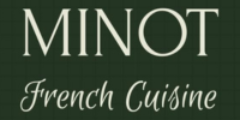A Historical Overview of French Cuisine
French cuisine, renowned for its elegance and sophistication, has evolved significantly over the centuries. From its roots in medieval times, characterized by heavy, spiced dishes borrowed from neighboring cultures, to the refined culinary techniques introduced during the Renaissance period, French cuisine has always been a dynamic and influential force in the culinary world.
The influence of French royalty on culinary arts cannot be understated. One of the pivotal figures in this domain was Catherine de’ Medici, an Italian noblewoman who married into the French royal family in the 16th century. Her arrival brought along a diverse array of Italian culinary techniques and ingredients, including the introduction of the fork to French dining etiquette. Louis XIV, known as the Sun King, further embellished the French culinary landscape. His reign was marked by grand feasts and the establishment of formal dining practices, which shaped the course of French gastronomy.
The French Revolution in the late 18th century played a crucial role in democratizing French cuisine. The upheaval led to the dissolution of the monarchy, which in turn allowed previously exclusive culinary knowledge and techniques to become more accessible to the general populace. Post-revolution, many chefs who had previously served nobility began opening their own restaurants, thereby spreading their expertise more widely and elevating the standard of public dining.
The 19th century brought about the founding of key culinary institutions, such as Le Cordon Bleu in 1895, which have since become synonymous with culinary excellence. Noteworthy chefs like Auguste Escoffier, who revised and codified French cuisine through his seminal work “Le Guide Culinaire,” played instrumental roles in defining the contours of modern French gastronomy. These contributions laid the groundwork for the nouvelle cuisine movement of the 20th century, which emphasized lighter, more delicate dishes and innovative presentation styles.
In contemporary times, French cuisine continues to evolve, fusing traditional techniques with modern gastronomic innovations. This historical journey underscores the richness and depth of French culinary traditions, which remain an enduring source of inspiration for chefs and food enthusiasts worldwide.
Signature Dishes and Regional Specialties
French cuisine is celebrated for its remarkable diversity, owing to its signature dishes and regional variations. Each region in France boasts unique flavors and ingredients, creating a tapestry of culinary delights that reflect local traditions and environments. Among the iconic French dishes, Coq au Vin stands out, a dish rooted in Burgundy that features chicken braised with red wine, mushrooms, and lardons. This dish exemplifies the rich, earthy flavors synonymous with French rural cooking.
Another highlight is Bouillabaisse, a traditional Provençal fish stew originating from the port city of Marseille. This aromatic dish comprises various Mediterranean fish, tomatoes, saffron, and herbs, simmered together to create a hearty and flavorful stew. In stark contrast, the colorful vegetable medley known as Ratatouille showcases the verdant bounty of Provence. Made with tomatoes, zucchini, eggplant, and bell peppers, this dish is a testament to the importance of seasonal and locally sourced ingredients.
Moving north to Brittany, we encounter Crêpes, versatile thin pancakes enjoyed as both savory meals and sweet treats. Adapted widely, crêpes can be filled with an array of ingredients, from ham and cheese to fruits, sugar, and chocolate. Similarly, the region of Alsace offers unique contributions with dishes like Choucroute garnie, a hearty dish of sauerkraut and various meats, reflecting the Germanic influence.
Burgundy, renowned for its wine culture, contributes both to French cuisine and global gastronomy. The region’s wine plays a pivotal role in numerous dishes, infusing a distinct depth and complexity of flavors. Equally significant are the diverse artisanal cheeses from various regions that typify the balance of taste and texture in French cuisine.
The traditional cooking techniques in French culinary arts further enhance its reputation. From slow braising and roasting to delicate techniques like sous-vide and soufflé, these methods preserve and amplify the natural flavors of ingredients. French cuisine’s reliance on seasonal produce and artisanal ingredients underlines the importance of freshness and locality, ensuring that each dish offers an authentic and exceptional gastronomic experience.
In conclusion, French cuisine’s signature dishes and regional specialties vividly portray the country’s rich culinary heritage. The combination of traditional techniques, locally sourced ingredients, and the influential wine and cheese culture together weaves a rich tapestry of flavors that distinguish French gastronomy on the global stage.
